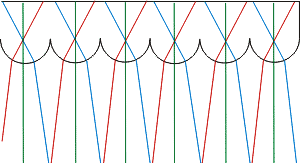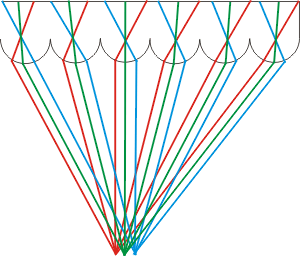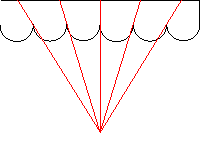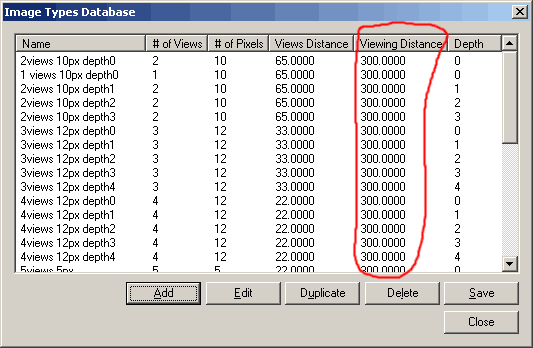

 |
 |
| a) without parallax correction | b) parallax correction |
Fig. 1. How a lenticular sheet works: optical scheme
Usual scheme of parallax-panoramogram is interlacing the strips of views, see Fig. 1a. But this scheme is true for narrow lenticular image, when the width of lenticular image is less than the viewing distance.

Fig. 2 Width of lenticular image is less than the viewing distance
 |
| Fig. 3. Changes of periods |
Panoramic lenticular images differ from usual post cards or visit cards. The panoramas are very broad. For that case, optical scheme is Fig. 1b. Look at the left figure 3. You can see that interlaced image period depends on viewing point. If viewing distance decreases, the period increases.
To take into account the viewing distance decrease, enlarge parallax-panoramogram period a little bit. When you print a pitch test and define the lenticular sheet frequency, you look at pitch test and lenticular sheet from necessary distance. That's why you get the frequency corresponding to necessary viewing distance. This frequency does not correspond to the nominal frequency of the lenticular sheet, it's a little bit less.
It's not enough to change the period depending on the viewing distance, we need also to modify the algorithm of lenticular image creation.
PhotoProjector uses scheme 1b for panoramic images. Turn on Parallax correction for that. If Parallax correction is turned off, the program uses the usual scheme 1a. Use Parallax correction for panoramic stereo images. Of course, you may use Parallax correction for any image.

Panoramic stereo images are looked from determined viewpoint: spectator stands in the central point of the panoram and looks from determined viewing distance. Enter supposed viewing distance to the Image type string.
